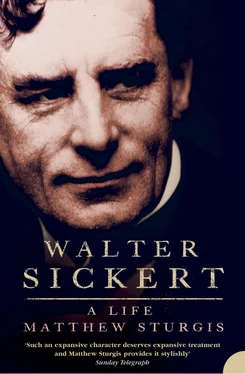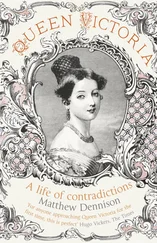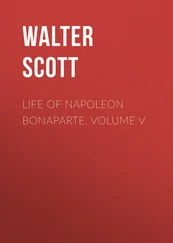To many of their friends, the Walter Sickerts seemed a less than obvious pairing. The journalist Herbert Vivian, who met them soon after their marriage, considered that there never had been ‘such an improbable ménage ’ as the ‘conventional’ Ellen and the unconventional Walter. 6 Blanche thought them more like brother and sister than husband and wife. 7 Yet they appear to have been happy. They were united by a common interest in Walter’s career and a belief in his talent. Superficially, Ellen made his life comfortable, and he made hers exciting. But there was more. Sickert was capable of great kindness: he nursed Ellen when she was ill, 8 and he made several tender, almost sentimental, portraits of her. 9 And from the evidence of Ellen’s partially autobiographical novel, Wistons , it would seem that there were moments of ‘exquisite passion’ in the first days of their marriage. 10 Certainly the romantic conventions were not entirely ignored, and after the wedding they departed for a honeymoon in Europe. 11
By the height of the season they were at Dieppe. From 19 August they took ‘a dear little house’ in the rue Sygogne, a narrow street running up from the Front, just behind the Casino. 12 They were in good spirits. Sickert, in his new role as the young husband, had grown a trim pointed beard and moustache and was looking conspicuously smart. (Blanche was amused to note the extent to which the Cobden connection seemed to have ‘helped palliate’ his ‘bohemianism’. 13 ) The newlyweds found a cast of friends and relatives assembled and assembling. Sickert’s parents and siblings were installed nearby. 14 Dorothy Richmond, over again from New Zealand, came to stay at the rue Sygogne, as did Ellen’s sister Jane. 15 Whistler was expected later in September. John Lemoinne, the distinguished editor of the Journal des Débats , was also in town with his three daughters. Lemoinne had known Richard Cobden and was anxious to make Ellen’s acquaintance. At the Bas Fort Blanc, Blanche had gathered together a trio of rising young painters – Paul Helleu, Rafael de Ochoa, and Henri Gervex, while the next-door villa, ‘Les Rochers’, had been taken by the popular librettist Ludovic Halévy and his family – an aged mother, pious sister, wife, and two young sons – Elie and Daniel. The Halévys had two house guests: Albert Boulanger-Cavé (a former Minister of the Fine Arts under Louis Philippe), and – as Walter ‘learned with delight’ – Edgar Degas. 16
Degas’ presence animated the whole party and gave to the five households a common bond of interest. The assembled company passed a happy month together in great intimacy. 17 Everyone loved Degas. They listened to his stories and went along with his jokes. 18 Ellen found him ‘perfectly delightful’. 19 Young Oswald Valentine Sickert felt that he should ‘never forget the gentleness and charm of his personality’. 20 The great artist was in holiday mood that summer – playful, communicative, and at ease. He posed for a series of humorous photographic tableaux, commissioned from the indigent local photographer, Walter Barnes: one of them was a pastiche of Ingres’ Apotheosis of Homer , with Degas taking the central role, flanked by the Halévy sons and the Lemoinne daughters. 21 He also developed an unexpected tendresse for Ellen’s sister Jane. When she had to return early to England Degas was one of the party that leapt into a small boat to be ferried across the port in order that they might wave her off. He subsequently remarked to Ellen, ‘We have all such an admiration for your sister that we are jealous of one another.’ 22
One of Sickert’s abiding memories of Degas that summer was that he was ‘always humming with enthusiasm’ airs from Ernest Reyer’s popular opera Sigurd . He had seen the piece over thirty times since its opening in 1884 (his attendance rate had been helped by the fact that he had been granted the privilege of free entry to the Opera earlier that year), but it is tempting to suppose that his choice of it was in part prompted by the homophony between Sickert and Sigurd. 23 Certainly Degas did pay the occasional musical tribute to his young friend, referring to him as ‘le jeune et beau Sickert’, in a phrase adapted from the song about ‘le jeune et beau Dunois’. 24 It was a telling mark of the real amity that grew up between them. The rapport established over those first meetings in Paris two years earlier was built upon. There is an informal photograph of the pair: Sickert standing beside his hero, eager, happy, and alert, with pointed beard, paint box, and straw hat. Degas, as Fantin-Latour had observed to Sickert, was ‘un personnage trop enseignant’ (a too ‘teaching’ personage), 25 but this was a quality exactly calculated to appeal to an ambitious young painter, thirsty for knowledge. They went about together, Sickert imbibing all that he could of Degas’ ‘teaching’. On one informal sketching expedition, made together with Blanche, Helleu, and some others into the fields behind the castle, Degas said something that Sickert considered of ‘sufficient importance never to be forgotten’: ‘“I always tried,” he said, “to urge my colleagues to seek for new combinations along the path of draughtsmanship, which I consider a more fruitful field than that of colour. But they wouldn’t listen to me, and have gone the other way”.’ This observation, Sickert noted, was made ‘not at all as a grievance, but rather as a hint of advice to us’. The exact meaning of the hint, if not immediately clear, returned Sickert to the idea that drawing might be the key to painting. 26
Sickert also had the chance to watch Degas at work, when he posed as one of a portrait group that Degas made at Blanche’s studio. Working in pastel, Degas began by drawing Sickert, standing in his covert coat at the edge of the group, looking, as it were, off stage. Then he ‘gradually added’ one figure after another – Boulanger-Cavé, Ludovic Halévy, Gervex, Blanche, and Daniel Halévy – each figure ‘growing on to the next in a series of eclipses, and serving, in its turn, as a point de repère for each further accretion’. 27 It was a mode of approach that related to the theory of drawing that Sickert had already learnt at Tite Street. Other aspects of Degas’ practice were, however, less familiar to the pupil of Whistler. When they had first taken up their pose, Ludovic Halévy had pointed out to Degas that the collar of Sickert’s coat was half turned up. He was about to adjust it when Degas called out: ‘“Laissez. C’est bien.” Halévy shrugged his shoulders and said, “Degas cherche toujours l’accident”.’ 28 On another occasion, during a rest in proceedings, Degas invited Gervex (then a young man under thirty) to come and inspect the work in progress. As Sickert recalled the moment, Gervex,
in the most natural manner in the world, advance[d] to the sacred easel, and, after a moment or two of plumbing and consideration, point[ed] out a suggestion. The greatest living draughtsman resumed his position at the easel, plumbed for himself, and, in the most natural manner in the world, accepted the correction. I understood on that day, once for all, the proper relation between youth and age. I understood that in art, as in science, youth and age are equal. I understood that they both stand equally corrected before a fact. 29
Sickert was not yet quite confident of his own command of the ‘facts’, but he felt that he was advancing in accomplishment.
He strove to impress Degas with his dedication to work. Ignoring the claims of the holiday season – to say nothing of the honeymoon – he would set off each day armed with his pochade box to record the beach and the town. 30 It was a very productive summer. Inspired by Degas’ electrifying presence, Sickert found himself painting with a new fluency and confidence, ‘running in’, as he put it, ‘without conscious operation’. It was ‘an astounding difference’. 31 All things seemed possible. Though he did attempt some larger works (which he left hanging out of the windows to dry), most of his output that summer was small in scale – little ‘sunlight pochades’. * 32 In what was surely a homage to Degas’ example he painted a small scene of the Dieppe Race Course. 33
Читать дальше












